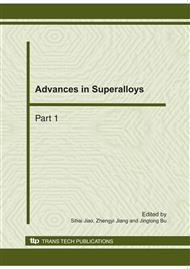p.1216
p.1222
p.1227
p.1233
p.1238
p.1243
p.1247
p.1252
p.1256
Electrochemical Evaluation on the Corrosion Properties of Welding Zones of 304 Stainless Steel
Abstract:
Two types of welding methods were performed on austenitic 304 stainless steel: laser welding and TIG welding. The differences of the corrosion characteristics of the welded zones from the two welding methods were investigated with electrochemical methods, such as measurement of the corrosion potential, polarization curves, cyclic voltammogram, etc. The Vickers hardness of all laser-welded zones (WM:Weld Metal, HAZ:Heat-Affected Zone, BM:Base Metal) was relatively higher while their corrosion current densities exhibited a comparatively lower value than those which were TIG welded. In particular, the corrosion current density of the TIG-welded HAZ had the highest value among all other welding zones, which suggests that chromium depletion due to the formation of chromium carbide occurs in the HAZ, which is in the sensitization temperature range, thus it can easily be corroded with an active anode. Intergrenular corrosion was also observed at the TIG-welded HAZ and WM zones. Consequently, we can see that corrosion resistance of all austenitic 304 stainless steel welding zones can be improved via the use of laser welding.
Info:
Periodical:
Pages:
1238-1242
Citation:
Online since:
October 2010
Price:
Сopyright:
© 2011 Trans Tech Publications Ltd. All Rights Reserved
Share:
Citation:


